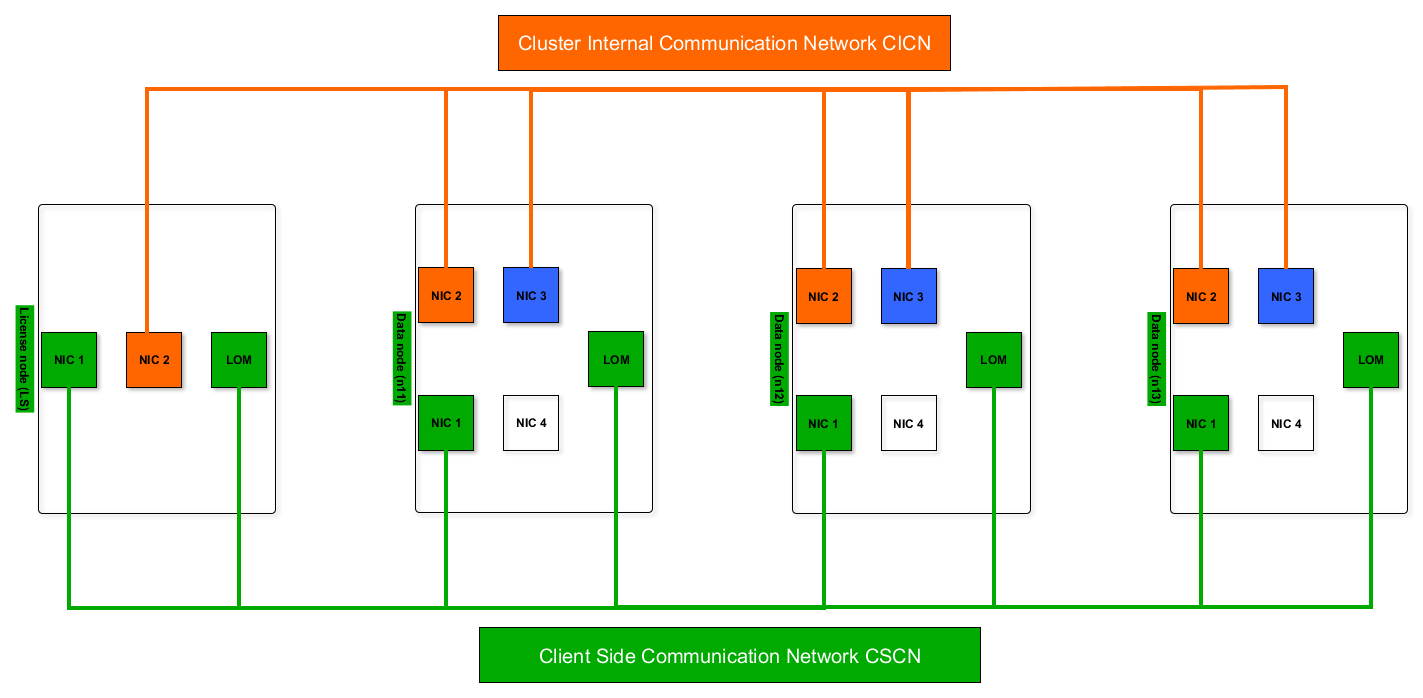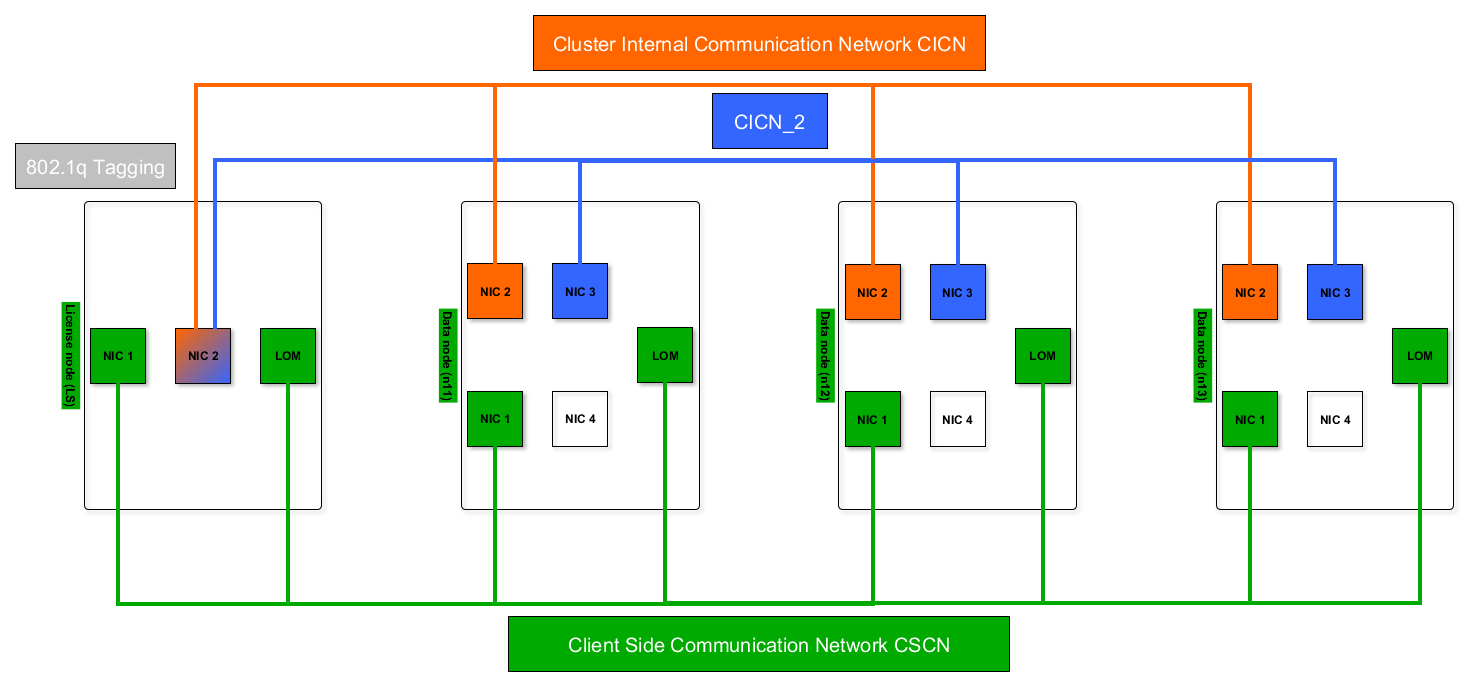Additional Networks
It is possible to have additional networks to the private and public network of a simple setup, for the purposes of network fail safety or for link bonding. The following applies:
- Multiple private networks can be set up either in active/passive mode for fail safety, or in active/active mode for link bonding on application level.
- Multiple public networks can be used in active/passive mode for fail safety.
For more information on setting up additional networks for fail safety or link bonding, refer to Prepare Cluster Networking Infrastructure section.
If nodes have fewer physical network interfaces than there are networks, VLAN tagging (802.1q) can be used. Tagging can help to reduce the number of network interface cards you need, but it raises the complexity of the network.
Example - Private Failover Interface
The below example depicts an additional private network set up for fail safety. Each cluster member has a third network interface card (NIC 3) to connect to an existing VLAN.

Example - Private Link Bonding Interface
The below example depicts an additional private network set up for link bonding. Each cluster member has a third network interface card (NIC 3) to connect to an additional VLAN (CICN_2). Note that the Management Node (or license server) must be able to access all private networks. In the example above, the management node does not have enough network interface cards, and so VLAN tagging is used.

